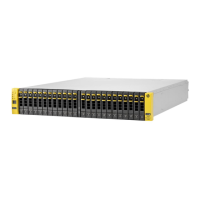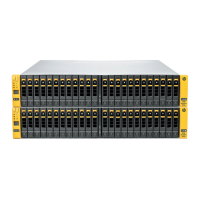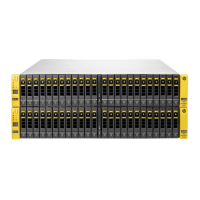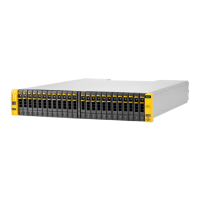4 Working with Storage Volumes
This chapter describes how to manage storage volumes. The sections apply to creation, modification,
and query operations on storage volumes. You can perform the following operations on storage
volumes:
• Query storage volume
• Create a storage volume
• Modify a storage volume (since WSAPI 1.2)
• Remove a storage volume
Volume Enumeration and Configuration Objects
Several enumerations and configuration objects are used for the various volume API operations.
These are described in the following sections.
Volume provisioningType Enumeration Types
Enumeration for the provisioningType JSON object is shown in Table 25 (page 38).
Table 25 Volume provisioningType Enumeration
DescriptionValueSymbol
Fully provisioned VV, either with no snapshot space or with statically
allocated snapshot space.
1FULL
Also, a commonly-provisioned VV where the user space is fully provisioned
and the snapshot space is associated with the snapCPG property.
Thinly-provisioned virtual volume, with space for the base volume allocated
from the user space that is associated with the userCPG property.
2TPVV
Also includes old-style thin provisioned VV (created on a 2.2.4 release or
earlier) where both the base VV and snapshot data are allocated from the
snapshot space associated with userCPG.
The VV is a snapshot (Type vcopy) and its space is provisioned from the
base volume's snapshot space.
3SNP
Remote volume admitted into the local storage system.4PEER
Unknown.5UNKNOWN
Volume CopyType Enumeration Types
Enumeration for the CopyType JSON object is shown in Table 26 (page 38).
Table 26 Volume CopyType Enumeration
DescriptionValueSymbol
Base volume (not a copy).1BASE
Physical copy (full copy).2PHYSICAL_COPY
Snapshot copy (virtual copy).3VIRTUAL_COPY
Volume state Enumeration Types
Enumeration for the state JSON object is shown in Table 27 (page 39).
38 Working with Storage Volumes

